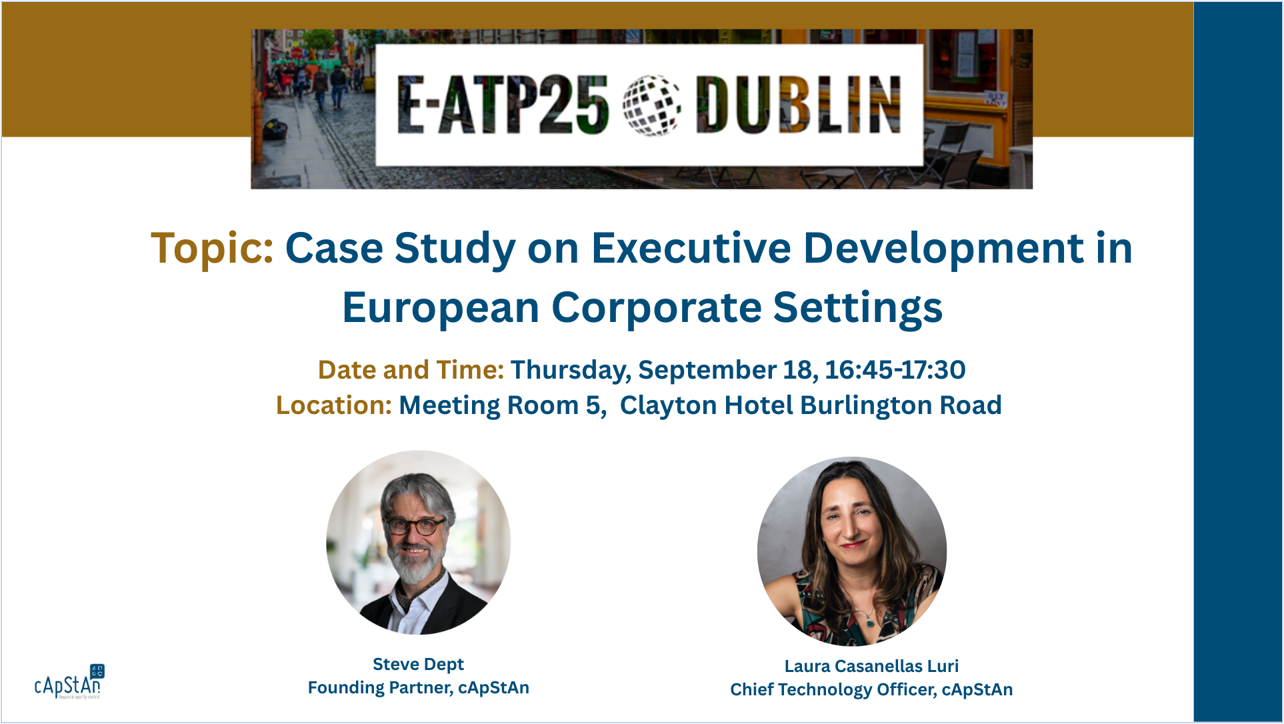
cApStAn Team at the E-ATP Conference in Dublin
The first European Conference of the Association of Test Publishers (E-ATP) at which cApStAn was present was set in Dublin, ten years ago, in 2015. Our founder Steve Dept recalls that his arrival in Dublin (during the Rugby World Cup) coincided with a surprise victory of the Japanese rugby team over the South African Springboks. As a quorum of E-ATP attendees had watched the game, the conversation starter became a stepping stone to unforgettable friendships. To this day, we are in regular contact with several people we met for the first time at E-ATP. cApStAn Linguistic Quality Control has not missed one edition of the E-ATP since Dublin 2015. And after Lisbon, Amsterdam, Athens, Madrid, London, Vienna and Berlin, E-ATP is back in Dublin this year, and we’ll be there, too.
cApStAn’s Chief Technology Officer, Laura Casanellas Luri and our Founder Steve Dept will be there to listen, learn, network, share and, of course, to answer your questions about multilingual testing in the age of large language models.
We very much look forward to presenting a case study we are particularly proud of, because it concerns assessments in a technology-rich environment, in which we leveraged best-of-class technology while suing human expertise where it matters and adds value.

On Thursday, September 18, 16:45-17:30 in Meeting Room 5, Laura Casanellas Luri and Steve Dept shall present “Executive Development in European Corporate Settings: A Case Study”. We shall share how content profiling defined the localisation path of an assessment portfolio for top-tier executives: we adopted different approaches for different types of content, thus leveraging technological efficiencies on an ad hoc basis while ensuring consistency across the digital assessment and survey platform. A customised, secure version of an online CAT tool was used to fetch the organisation’s materials directly from a GitHub repository. Translators were then able to see the text to be translated without an exchange of files. Likewise, the translations were synced to the client’s repository, who received them in the desired format without exchange of files. We shall also explain how automated quality estimation and quality evaluation work in combination with human evaluation.
Dublin, here we come again!